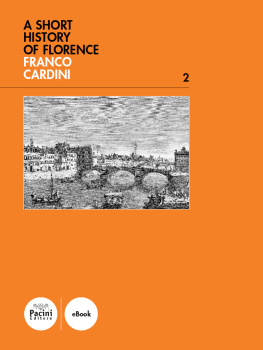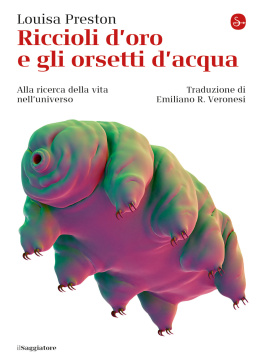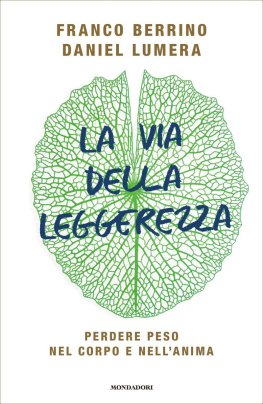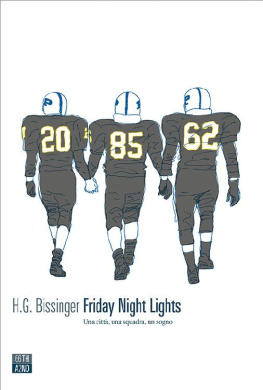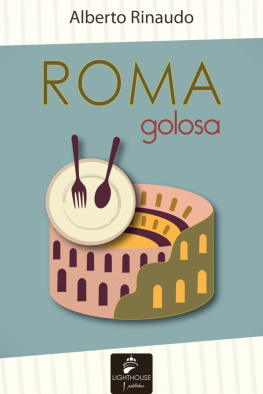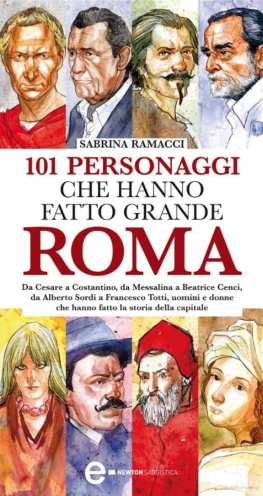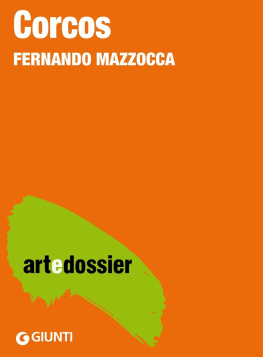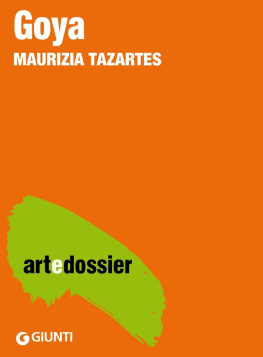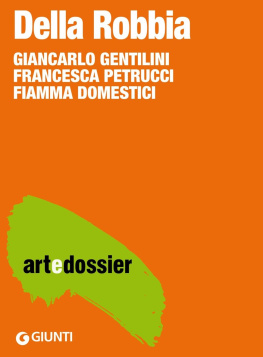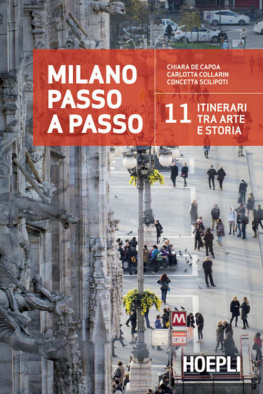Franco Cardini - A Short History of Florence
Here you can read online Franco Cardini - A Short History of Florence full text of the book (entire story) in english for free. Download pdf and epub, get meaning, cover and reviews about this ebook. City: Pisa, year: 1999, publisher: Pacini Editore, genre: History. Description of the work, (preface) as well as reviews are available. Best literature library LitArk.com created for fans of good reading and offers a wide selection of genres:
Romance novel
Science fiction
Adventure
Detective
Science
History
Home and family
Prose
Art
Politics
Computer
Non-fiction
Religion
Business
Children
Humor
Choose a favorite category and find really read worthwhile books. Enjoy immersion in the world of imagination, feel the emotions of the characters or learn something new for yourself, make an fascinating discovery.
- Book:A Short History of Florence
- Author:
- Publisher:Pacini Editore
- Genre:
- Year:1999
- City:Pisa
- Rating:3 / 5
- Favourites:Add to favourites
- Your mark:
- 60
- 1
- 2
- 3
- 4
- 5
A Short History of Florence: summary, description and annotation
We offer to read an annotation, description, summary or preface (depends on what the author of the book "A Short History of Florence" wrote himself). If you haven't found the necessary information about the book — write in the comments, we will try to find it.
A Short History of Florence — read online for free the complete book (whole text) full work
Below is the text of the book, divided by pages. System saving the place of the last page read, allows you to conveniently read the book "A Short History of Florence" online for free, without having to search again every time where you left off. Put a bookmark, and you can go to the page where you finished reading at any time.
Font size:
Interval:
Bookmark:
A SHORT
HISTORY
OF FLORENCE
franco
cardini

Copyright 1999 by Pacini Editore
ISBN 978-88-6315-096-4
eBook made by
Hello Book
First digital edition 2011
Questo eBook non potr formare oggetto di scambio, commercio, prestito e rivendita e non potr essere in alcun modo diffuso senza il previo consenso scritto delleditore. Qualsiasi distribuzione o fruizione non autorizzata costituisce violazione dei diritti delleditore e dellautore e sar sanzionata civilmente e penalmente secondo quanto previsto dalla legge 633/1941.
Preface
Florence belongs to that small group of cities whose history may be told too amply in a few lines or too sketchily in many volumes. A true history of Florence, a history concerned with the heart of the story - like the true history of Rome or Athens or Jerusalem - is in the end the history of our entire civilisation; the writer who looks into it deeply enough finds it so rich that even the fullest, most analytical account of it could not do it justice.
But for this very reason, perhaps, a Short History may be useful to many readers, from the student to the more focused type of tourist to the Florentine who would feel discouraged faced with a full treatment of the subject but who does not want to give up the search for a vademecum, which will help him draw from his experience, his memories, his sensations, and his feelings too, an all-inclusive image of a remarkable - a unique - city .
To call Florence remarkable and unique does not exempt one from the duty of reflecting on her history and attempting rational comment. What has made her what she is, over the centuries? How can she still be considered exceptional today? Is there real fascination there, apart from media hyp and the tourist industry? And her history, which someone called splendid, hasnt it got another face?
A history book, however brief, has as its object a past, recent or distant, but it is written in and for the present. When an essay like this one has as its aim the original characteristics of a great artistic centre which is also a great twentieth-century city with its problems and its crises, it is even more urgent that the essay furnish answers that will limit the characteristics and historical assumptions of those problems and crises. And in a city like Florence, afflicted with confusion and decay which one can seek to explain but not deny, such a task is neither easy nor pleasant.
There is not a city in the world that does not feel, for good or ill, the weight of its past. But in Florence, and for Florence, this weight is on the one hand crushing, while on the other hand it is the thing that shapes the life of today. At the urban and monumental level, this tallies very obviously, even if perhaps with less dramaticity than in Venice (but much more than happens for many other historic centres). It is, all the same, the heritage of the past in terms of cultural and traditional significance that still conditions life, the nature of society, the policies, the tastes, the economy and the image of Florence and the Florentines. Here the past is not simply past: it is an integral part of the present, one lives it - indeed one relives it, one even re-invents it - as the present, one plays it over again as if it were indivisibly bound to the present. From the significance of Florence in the Risorgimento - the ballot boxes of the strong in Santa Croce, the Arno in which they came to dip their clothes in that Italian language without which no plausible plan of uniting Italy could have been envisaged - to her most modern and recent political proposals, or the most in images of crafts and high quality fashion which still bring Florence to the attention of the world, there is no aspect of the life of the city or of the activities of her people which does not give the impression of being first and foremost a kind of paper currency which is valued because it is guaranteed by the gold reserves of the Florentine past. It is a past made of memory, a memory of the political past, as well as of art, churches and museums.
This is a city unlike any other, yet a universal city; a city in some ways enclosed - more than she seems - in a sort of lingering, grim provincialism of which she is at times downright proud; but at the same time a city that can truly claim to be the glory of the world. Between the thirteenth and nineteenth centuries she was well able to dominate, by various rights and in various ways, a regional state, Tuscany; and when she became part of a broader, national unit, to whose cultural identity and justification she had contributed, she became for a short time the nations capital. But she was born to be what she is, and this role was too restricting. Florence owes her role to the freedom and enterprise of the Florentines, to their capacity to look beyond the temporal limits of the present and the geographical limits of the peninsula. For this reason - without denying the importance of the prospects that opened up in the new Italy of 1860 - we have chosen to stop this brief history at the double loss of independence and dominion over the other Tuscan cities. If post-unification Florence meant something, indeed a great deal, to united Italy, it was owing to the memory of - and in some measure to the pride in and nostalgia for - the days of Florentine liberty and those of the Medici Princes. This profile of Florentine history sets out to present not so much the events and institutions of the city as a search for the characteristics that make up her identity.
Cities, like people, bear traces - in their exterior aspect, in their urban structure, in that complex of tangible and intangible characteristics that makes their atmosphere - of their past: the glories, the inconsistencies, the sufferings, the mistakes. Even to the visitor who knows little of history Rome still speaks the language of her ancient splendours, of her medieval devastation punctuated by grim, warlike rocks and beautiful basilicas, her Renaissance and baroque vigour, her Umbertine pomp; she speaks of Fascist rhetoric in her neo-neo-classical pillars and arches and futuristic extravaganzas recycled in colossal dreams. Milan tells a hard but triumphant story of her years as a great Roman and Christian capital in the fourth and fifth centuries, and those in which she was ruled by a duke or by a commune and established her military or manufacturing strength; she speaks in the water of her canals within the city, by now mostly filled in but at one time pulsating with life and activity. She speaks of her love for the machines which already, during the years of the closed Viscounties, foreshadowed the industrial future, and finally of the enlightened Hapsburg despotism and the strenuous years of the Napoleonic dictatorship, both of them preludes to her establishment as a European metropolis. Palermo tells us stories of splendid and desolating happenings in her Arab and Norman memories, her colonial gardens, her Spanish baroque and her art nouveau buildings.
To anyone visiting Florence for the first time - or any time that felt like the first - with the help of a good, ordinary tourist map, the Roman imprint would seem to be clearly stamped on the city. At the same time, in the right-angled network of streets in the centre the visitor would see the desire to rationalise, which, between the nineteenth century and the early twentieth, tried to make the city healthy and modern. In some of the street names (Via del Campidoglio (Capitol), Via delle Terme (thermal baths), Via di Capaccio (Caput aquae, headwaters, source) he would see the Roman plan of the city, which appears also in the curious structure of the buildings between Piazza Peruzzi and Piazza Santa Croce, which are curved because they were built on the foundations of the amphitheatre. But the visitor realises at once - from the forbidding towers built of massive stone, from the airy yet grim Renaissance palaces, from the churches, the most beautiful of which were built between the Romanesque and mannerist periods (though in many cases altered at various times) - that the citys great period, her golden age as they say, was between the third and the sixteenth centuries. It was such an exalted, glorious, significant age that the Florentines seem to have gone on dreaming about it long after it came to an end; so much so that the more astute tourist will have no difficulty in discerning, in the continual repetition of medieval and renaissance shapes and designs everywhere, an abundance of imitations, quotations and arbitrary, over-elaborate restoration. This is the neo-gothic and neo-renaissance look imposed on the city in the nineteenth and twentieth centuries, which is confused, but never fused, with the true Middle Ages and the real Renaissance which so enriched Florence. While these additions are striking, the visitor will be equally moved by what is lacking. At first sight, Florence will seem to him to be a city devoid of the baroque. On closer examination it becomes clear that there is baroque to be found, and baroque of high quality, from the delicate architecture of San Gaetano to the sumptuous Santissima Annunziata. But this is a temperate baroque, closely linked to the mannerist tradition; it reminds one of the prose of Galileo Galilei, so dry, limpid and deliberately remote from the frills fashionable in his time; it is a baroque - later continued by the eighteenth century of physiocracy and the Enlightmenment - that is all realism and scientific spirit, which makes itself felt above all - one would say - in the brass of the scientific instruments in the Specola or the Science Museum, or in the austere old carved wooden shelves of the Laurentian and Marucellian libraries. This baroque and this eighteenth century reflect the sombre decline of the house of Medici and the serene, at first unscrupulous and later soporific, Hapsburg-Lorraine government.
Font size:
Interval:
Bookmark:
Similar books «A Short History of Florence»
Look at similar books to A Short History of Florence. We have selected literature similar in name and meaning in the hope of providing readers with more options to find new, interesting, not yet read works.
Discussion, reviews of the book A Short History of Florence and just readers' own opinions. Leave your comments, write what you think about the work, its meaning or the main characters. Specify what exactly you liked and what you didn't like, and why you think so.

